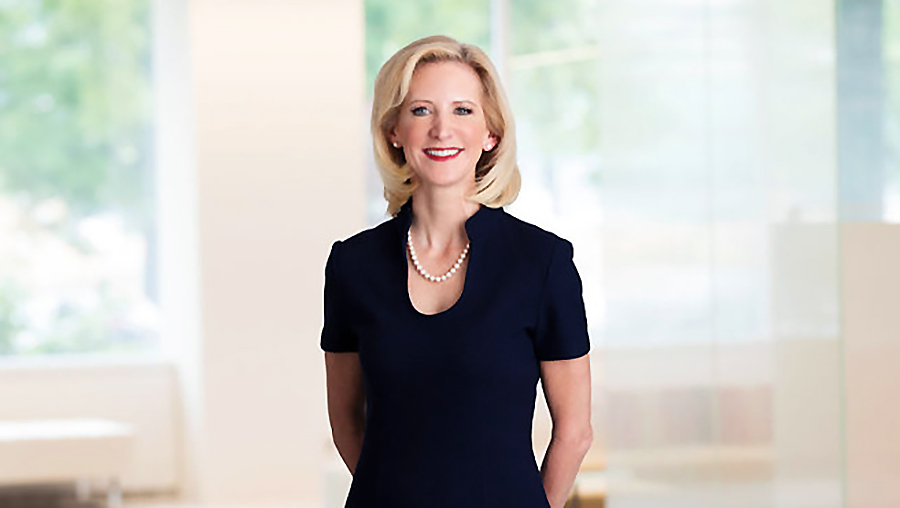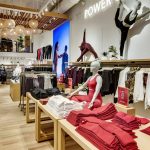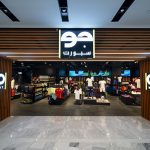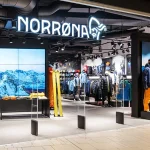In her first address to the investment community, Stephanie Linnartz, Under Armour’s new CEO, declared, “Growth is without a question our highest priority.” She cited footwear, women, sport style and full-price stores as untapped opportunities but particularly stressed an urgency for Under Armour to establish a more-premium positioning and amplify brand heat.
She gave her initial plans to return Under Armour to growth as the company reported earnings and revenue for the fiscal fourth quarter ended March 31 that beat analyst expectations but provided soft guidance for the current fiscal year that fell short of Wall Street’s consensus.
Shares of Under Armour closed Tuesday at $8.16, down 48 cents, a decline of 5.6 percent. The stock’s 52-week range is between $6.38 and $13.05.
“The potential for this brand is even bigger than I imagined when I walked through the door at the end of February,” said Linnartz, who took over as Under Armour’s president and third-ever CEO on February 27.
However, the former Marriot executive said that given the brand’s overall opportunity in the active lifestyle space and assessing the competitive landscape, “we have yet to capitalize on our full potential for athletes, customers and shareholders. We must realize this potential and stop at nothing until we deliver renewed growth.”
She said that in her first 70 days with the company, she has met with Under Armour employees and wholesale accounts to make an initial assessment of the brand’s strengths and opportunities and come up with “three priorities to drive clarity and business alignment across the company.”
Under Armour is calling the three-pronged program, “Protect This House Three.” or PTH3 with a focus on brand, product and North America. The playbook is designed to accelerate top-line growth over the next three years.
“Of course, execution will not happen overnight,” said Linnartz. “It’s a journey that will require improved execution, in some areas new talent, and greater accountability for our leaders to drive positive and tangible business results. At its core, it’s about focus, execution and accountability.”
She elaborated on the PTH3 plan.
Drive Brand Heat
Linnartz noted that although Under Armour is expected to drive nearly $6 billion in sales in the current fiscal year “we are not pulling in our fair share of market growth. I believe a causal factor here is the inconsistency of how the Under Armor brand shows up across our regions with the most significant opportunity to improve in the United States.”
Internationally, she believes Under Armour is better positioned with the brand “received in its most premium position in Europe,” thanks to quality wholesale relationships, disciplined channel segmentation, and consistently optimized brand activations. As a result, EMEA’s sales grew 23 percent on a currency-neutral basis in its just-completed fiscal year.
She said, “Moving forward, we’ll continue to build on this momentum, focusing on full-funnel mediums and sports-marketing efforts, especially with global football in the UK and Spain to win with 16-to-20-year-old varsity athletes.”
In APAC, particularly China, Under Armour “is viewed as what locals generally describe as a professional athlete’s brand. So, the connection and brand heat delivering results continues to be consistent with our objectives.”
Sales in the first nine months of fiscal 2023 were challenged due to ongoing pandemic-related lockdowns, but currency-neutral revenue growth was 31 percent in China in the fourth quarter as the environment normalized. Linnartz added, “With fitness as a tailwind, improved storytelling and a growing loyalty program in China, we remain bullish on the region’s future.”
She added, “In North America, specifically the U.S., there is no question that athletes love the Under Armour brand. And while our consumer insights tell us that we have tremendous brand awareness, there’s also a high level of latent brand equity – latent because consumers are aware and engaged, yet conversion is more dormant than it should be.”
She attributes the latency to “inconsistent execution” across product, marketing and retail efforts “from aligning products to be premium at every price point, to disciplined channel segmentation, to more consistent product marketing. Here is a significant opportunity to activate more simply across the dimensions that matter and drive improved brand affinity.”
To improve brand affinity, Under Armour is analyzing product and marketing strategies to see why they’re “not breaking through to reach our target consumers.” Citing its major investments in ambassadors, including Stephen Curry, Justin Jefferson and Jordan Spieth, she added that “it’s clear to me that we are not capitalizing on our assets to our best advantage or return.”
One step has been the recent relaunch of the “Protect This House” campaign. Linnartz said, “Reinventing ‘Protect This House’ is a new call to action for young athletes, whose motivations differ from the generations that came before them.”
The campaign will be prominent around the women’s World Cup this summer, featuring the brand’s soccer ambassadors including Kelley O’Hara and Alex Greenland. The overall campaign will also emphasize digital content beyond typical media placements. Linnartz said, “We’re utilizing an always-on approach to meet athletes where they live, train, compete and recover. Also, local activations like our All-American and UA Next events will continue in North America and transition into other regions like EMEA to drive brand advocacy further.”
Organizationally, Under Armour has already recently made some leadership changes and is searching for a chief consumer officer to amplify messaging. Linnartz said, “For now, the heads of brand sports marketing and digital all report directly to me as I get closer to these areas of our business and continue to assess our needs. We are working on adding new world-class marketing and commercial talent to ensure our teams have the right leadership and capabilities to fuel our growth expectations.”
Deliver Elevated Design And Products With A Focus On Footwear, Women’s And Sportstyle
On product, she cited footwear, women’s and sportswear as particular avenues to tap growth in addition to overall elevating the brand’s positioning.
“We continue to deliver industry-leading innovations that once athletes have them, they can’t imagine living without,” said Linnartz. ”That said we haven’t finished the play on becoming premium at every price point, nor created a critical mass business in the better part of the product pyramid, especially in footwear, where most of our peers enjoy considerably larger businesses.”
In footwear, she said Under Armour has built a $1.5 billion business with winning franchises such as Velocity, Phantom and Infinite in running; Curry, Breakthrough and Spawn in basketball, and Highlight and Spotlight cleats. However, one largely-untapped area is lifestyle footwear.
Linnartz said, “You will hear us talking a lot more about sneaker culture, especially as we open the aperture to sportstyle.” She said Under Amour sneakers are “ripe for collaborations” and will become a larger part of future launches. Linnartz said, “We are bringing in sneaker and branding experts who will add industry-proven design horsepower to the team, especially as we expand our sportstyle offerings.”
In performance apparel, the brand has a “strong portfolio of products,” citing HeatGear, ColdGear and Compression, that can be leveraged with existing and new categories. Current pushes, including Rush Energy, Peak Woven, Flex Woven and Vanish Woven, along with its bras range also continue to elevate the brand’s premium offering.
With its recently-formed, long-term partnership with Stephen Curry, Linnartz sees a “significant opportunity to amplify the Curry brand in basketball” as well as in categories like golf. She said that particularly given the brand’s partnership with Jordan Spief, Under Armour has been “underserved as of late” in the golf category.
On the women’s opportunity, Linnartz believes Under Armour makes “exceptional women’s products in specific collections,” but women’s continues to account for less than a quarter of the brand’s sales. Success has been found in bras and bottoms but Under Armour has “yet to make our definitive ‘must-have it’ product so that it is top-of-mind as we work to drive more significant growth.”
Footwear is also seen as critical to accelerating the women’s business. Linnartz said on women’s footwear, “Here too, we have a solid base from which to grow. But we need accelerators. The consistency of great design, fit and the all-important style factor across the entire offering is not where we need it to be.”
She stressed Under Armour “will go after women harder than this company has ever seen.”
In sportstyle, Under Armour is progressing on repositioning some of the brand’s current products and showing them in “non-active occasions, the ‘live part’ of an athlete’s day.”
Due to the product design cycle, the ramped-up sportstyle push won’t become a “material driver” of revenue until fiscal 2025. She added, “Even so, we have seen early success in our Essentials and Unstoppable apparel collections of fleece and warm-ups. And we are looking forward to new offerings as our SlipSpeed footwear platform adds new options this fall.”
Another priority related to product is improving marketing around launches on a consistent basis. Linnartz said, “Through research, we have discovered that even our athletes are not fully aware of the depth of the innovations we offer. The opportunity to close this gap will require the redeployment of dollars to support better storytelling to enhance demand.”
Drive Growth In The U.S.
Linnartz noted that the U.S. has been recovering from hyper-promotional activities in 2017 and 2018 and is now facing the return of “higher-than-desired promotional activities in our home market.”
She traced the causes of the U.S. weakness in recent years to a lack of “consistent product, marketing and segmentation discipline, along with sector-wide inventory malaise – all of which have constrained brand affinity in the U.S.”
Progress in recent years has been made at improving the “quality” of the U.S. business, including exiting undifferentiated wholesale doors, reducing the brand’s off-price exposure by more than two-thirds and reorganizing staff, systems and processes. She said, “As a result, we have seen customer acquisition and retention metrics improve, establishing a healthier base for growth.”
She cited a number of initiatives to further revive growth in the U.S. with a prediction of a return to growth for North America by its fiscal year ended March 2025.
At retail, Linnartz noted that Under Armour has a “very productive and profitable” factory outlet business but they represent 90 percent of its locations compared to about 75 percent for many of the brand’s competitors. As such, she sees an “opportunity for premium growth” within its full-price Brand House locations. Under Armour currently has 18 Brand House locations in the U.S.
Linnartz said, “We plan to focus our full-price stores on productivity and consumer experience, driven by smaller, easier-to-navigate store formats that are focused on storytelling to appeal to young athletes, exceptional customer service and always being in stock. By the end of this calendar year, our full-price concepts will also be revamped to showcase sportstyle products with a more robust curation.”
Based on learnings from a recent pop-up in New York City supporting its SlipSpeed training shoe launch, Under Armour will be looking to better align its full-price stores with local “critical moments like sporting events, competitions and festivals.”
On digital, Under Armour will continue to focus on reducing promotional activities but also improving product presentation, streamlining checkout, speeding navigation and using online to better showcase the brand. Said Linnartz,
“The team understands the interconnectivity between physical and digital retail and is making the right investments to ensure that our stores and website drive more meaningful sales across our broader North American ecosystem, including our wholesale partner business.”
At wholesale, Linnartz said that although Under Armour has “solid relationships” with many key chains, the brands’ positioning is largely focused on the lowest tier a “good, better, best” strategy. She said, “The critical mass in our U.S. business is oriented towards good-level products. So, we have an opportunity to build out the better and best part of our segmentation.”
She said cited the mall as well as run and golf speciality shops as “under-penetrated” channels for the brand at the wholesale level.
“Improving our U.S. business is critical to growing our global business as the most profitable region,” said Linnartz. “Growing faster here means more future dollars to invest in product, marketing and our international business as well as increasing returns to shareholders.”
Linnartz provided her insights while Under Armour gave a cautious outlook for the year. For fiscal 2024, earnings are projected between 47 cents and 51 cents compared adjusted EPS for 2022 of 58 cents and below the consensus of 61 cents. Revenue is expected to be flat to up slightly. Analysts’ consensus was $6.09 billion, up 3.2 percent from $5.9 million in 2022.
“We are operating and executing with our eyes wide open,” Linnartz concluded. “We know there is much work ahead of us and that we must move with urgency. Although fiscal 24 will be a year of building as we lay the groundwork aligned with our priorities, I am confident that we will achieve the growth and profitability that I know this brand is capable of over the long line. Now is the time for bold decisions and distinct actions that yield results.”
Photo courtesy Stephanie Linnartz/UA
















